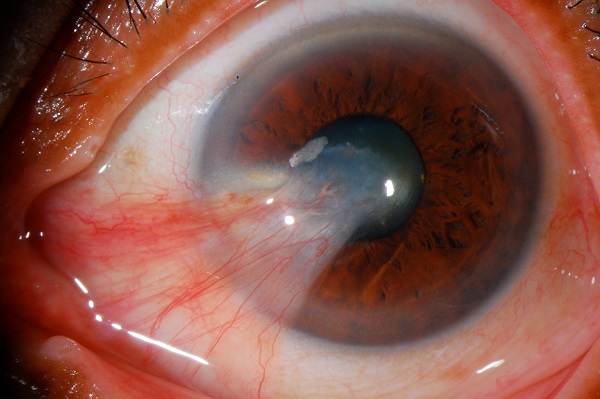
Pterygium (eye)?
A pterygium of the eye (plural pterygia or pterygiums, also called surfer's eye) is a pinkish, roughly triangular tissue growth of the conjunctiva onto the cornea of the eye. It typically starts on the cornea near the nose. It may slowly grow but rarely grows so large that it covers the pupil and impairs vision. Often both eyes are involved.
The cause is unclear. It appears to be partly related to long term exposure to UV light and dust. Genetic factors also appear to be involved. It is a benign growth. Other conditions that can look similar include a pinguecula, tumor, or Terrien's marginal corneal degeneration.Pterygium surgery involves removal of the abnormal tissue from the sclera and cornea of the eye. Today’s techniques offer a significantly higher success rate than conventional surgery. In traditional “bare sclera” pterygium removal, the underlying white of the eye is left exposed. Healing occurs over two to four weeks with mild to moderate discomfort. Unfortunately, “bare sclera” pterygium surgery has a high rate of re-growth; this occurs in up to 50% of patients. In many cases, the pterygium grows back larger that its original size. Over the years, surgeons have used several different techniques to lessen the likelihood of pterygium recurrence, including radiation treatment and the use of “antimetabolite” chemicals that prevent growth of tissue. Each of these techniques has risks that potentially threaten the health of the eye after surgery, including persistent epithelial defects (ulceration in the surface of the eye), and corneal melting.
